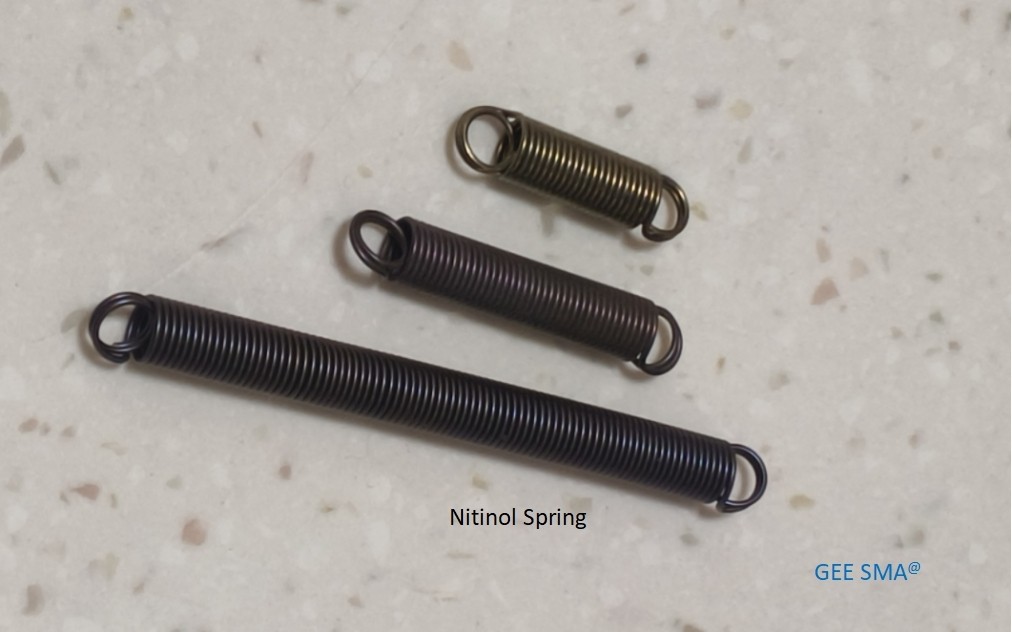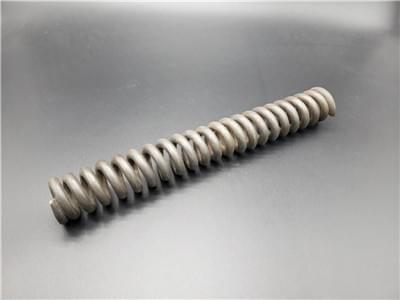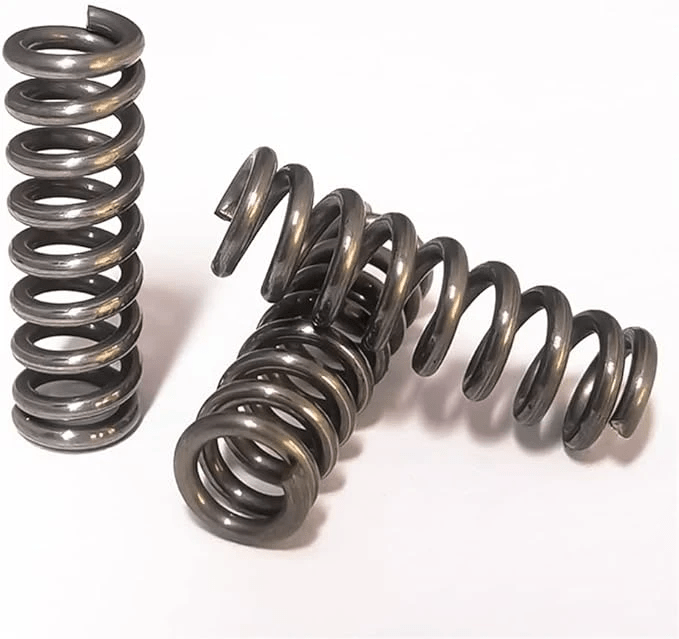Introduction

Are you familiar with the incredible properties of nitinol springs? These unique components are made from a shape memory alloy that exhibits remarkable flexibility and resilience. Nitinol springs are widely used in medical devices, thanks to their ability to return to their original shape after deformation. Let's explore the various applications and advantages of using nitinol springs in the field of healthcare.
Understanding Nitinol Springs
Nitinol springs, also known as memory or muscle wire, are made from a nickel-titanium alloy that can remember its original shape and return to it when heated. This fascinating property makes them ideal for a wide range of medical applications, where precise and reliable performance is crucial.
Applications of Nitinol in Medical Devices
Nitinol is used in an array of medical devices, including stents, orthopedic implants, and dental braces. Its unique ability to withstand deformation without permanent damage makes it invaluable in these critical applications, where durability and flexibility are essential.
Advantages of Using Nitinol Springs
The advantages of nitinol springs extend beyond their remarkable flexibility and resilience. Their biocompatibility with human tissues makes them an ideal choice for medical devices, while their superelasticity ensures they can endure repeated use without failure.
What is Nitinol?

Nitinol, a nickel-titanium alloy, is a unique material known for its shape memory and superelastic properties. Nitinol springs are made from this alloy, which allows them to return to their original shape after being deformed. This makes them ideal for various applications in industries like healthcare and aerospace.
Nitinol Spring Composition
Nitinol springs are composed of nearly equal parts of nickel and titanium, with small amounts of other elements such as iron and chromium. This composition gives the alloy its unique properties, making it highly resilient and durable for use in various medical devices.
Nitinol's unique composition also allows it to exhibit shape memory and superelasticity, meaning it can return to its original shape after being deformed, making it ideal for medical applications where precise and consistent performance is required. Additionally, the inclusion of small amounts of iron and chromium enhances the biocompatibility of nitinol, reducing the risk of adverse reactions when used in implants or other medical devices within the human body. This combination of properties makes nitinol an invaluable material for a wide range of medical applications, from stents and guidewires to orthodontic braces and surgical tools.
Nitinol Spring Properties
The properties of nitinol springs include shape memory effect, which allows them to revert to their original shape when heated, and superelasticity, enabling them to withstand large deformations without permanent damage. These properties make nitinol an ideal material for applications that require flexibility and resilience.
The unique properties of nitinol springs also make them highly resistant to corrosion, making them ideal for applications in harsh environments or where exposure to moisture is a concern. This corrosion resistance adds to the durability and longevity of nitinol springs, making them a reliable choice for a wide range of industrial and commercial applications. Additionally, the ability of nitinol springs to maintain their performance over time, even in challenging conditions, further enhances their appeal as a versatile and dependable material.
Nitinol Spring Manufacturing Process
The manufacturing process of nitinol springs involves shaping the alloy into the desired form through processes like cold working or heat treatment. This allows manufacturers to create custom shapes and sizes for specific applications, making nitinol springs versatile and adaptable for various uses.
The versatility of nitinol springs extends beyond just their ability to be customized in shape and size. Nitinol's unique properties, such as superelasticity and shape memory, make it an ideal material for springs used in various industries. These properties allow nitinol springs to withstand repeated bending and flexing without permanent deformation, making them highly durable and long-lasting. Additionally, the shape memory effect enables nitinol springs to return to their original shape after being deformed, ensuring consistent performance over time.
Applications in Medical Devices

Nitinol Spring in Stents
Nitinol springs are commonly used in the production of stents, which are small mesh tubes inserted into narrowed or weakened arteries to help improve blood flow. The unique properties of nitinol, such as its shape memory effect and superelasticity, make it an ideal material for stents as it allows for easy insertion and expansion within the body's vessels.
Nitinol springs are also utilized in orthopedic implants, particularly in devices such as bone plates and screws. The flexibility and durability of nitinol make it an excellent choice for orthopedic applications, as it can withstand the stresses and strains placed on it within the body. Additionally, its shape memory properties allow for a customized fit to the patient's anatomy, leading to better outcomes and reduced recovery times.
Nitinol Spring in Orthopedic Implants
In orthopedic implants, nitinol springs are utilized due to their flexibility and biocompatibility. These implants, such as bone plates and screws, require materials that can withstand the body's movements while promoting healing. Nitinol's ability to adapt to changes in temperature and stress makes it an excellent choice for orthopedic applications.
Additionally, nitinol springs are also used in dental braces due to their flexibility and shape memory. These properties allow the braces to apply gentle and consistent pressure to shift the teeth into proper alignment over time. Nitinol's biocompatibility is crucial in dental applications, as it minimizes the risk of adverse reactions within the mouth. The ability of nitinol to withstand the constant movement and pressure from chewing and speaking makes it an ideal material for dental braces, providing patients with a comfortable and effective orthodontic treatment.
Nitinol Spring in Dental Braces
Nitinol springs are also commonly found in dental braces due to their unique properties. The superelasticity of nitinol allows for gentle but constant force to be applied to the teeth over time, resulting in more effective tooth movement with less discomfort for the patient.
Furthermore, nitinol springs in dental braces are highly durable and long-lasting, making them an ideal choice for orthodontic treatment. This means that patients can rely on their braces to consistently apply the necessary pressure to move their teeth into the desired position without worrying about frequent replacements or adjustments. As a result, nitinol springs offer a reliable and low-maintenance solution for individuals seeking orthodontic care.
Advantages of Nitinol Springs
Shape Memory Effect
Nitinol springs are renowned for their remarkable shape memory effect, allowing them to return to their original shape after being deformed at certain temperatures. This unique property makes them ideal for applications requiring precise and controlled movements, such as in medical devices like stents and orthopedic implants.
Superelasticity
One of the key advantages of nitinol springs is their superelasticity, enabling them to withstand large deformations without permanent damage. This makes them highly durable and reliable for use in medical devices that require flexibility and resilience, such as dental braces and surgical tools.
Biocompatibility
Nitinol springs exhibit excellent biocompatibility, meaning they are well-tolerated by the human body without causing adverse reactions or tissue irritation. As a result, they are widely used in medical implants and devices, offering patients a safe and effective solution for various healthcare needs.
Disadvantages of Nitinol

Nitinol springs, also known as shape memory alloy springs, have a few drawbacks despite their numerous advantages. One of the major disadvantages of nitinol is its susceptibility to corrosion, which can limit its lifespan and performance in certain environments. This can be a concern when nitinol springs are used in medical devices that come into contact with bodily fluids or harsh chemicals.
Corrosion
The potential for corrosion in nitinol springs is a significant consideration when designing and manufacturing medical devices. The presence of corrosive substances can degrade the material over time, affecting its mechanical properties and potentially compromising the functionality of the device. Proper surface treatments and coatings may be necessary to mitigate this issue and ensure the long-term reliability of nitinol components in medical applications. Additionally, regular maintenance and inspections should be conducted to detect any signs of corrosion early on, allowing for timely intervention and prevention of potential device failure. It is crucial for manufacturers to stay informed about new developments in materials science and corrosion-resistant technologies to continually improve the performance and longevity of nitinol medical devices.
High Cost
Another drawback of nitinol springs is their relatively high cost compared to traditional materials such as stainless steel or titanium. The unique properties and complex manufacturing processes associated with nitinol contribute to its higher price point, making it less accessible for some applications where cost-effectiveness is a primary concern.
Additionally, the high cost of nitinol springs may also deter some manufacturers from using this material in their products. This could limit the potential applications for nitinol springs, as companies may opt for more affordable alternatives to keep production costs down. As a result, the unique properties and benefits of nitinol may not be fully realized in certain industries where cost is a significant factor in material selection.
Limited Fatigue Life
Nitinol springs are also subject to limited fatigue life, especially when subjected to repeated bending or cycling. Over time, the material may experience fatigue failure due to the accumulation of stress cycles, which can impact the performance and durability of medical devices utilizing nitinol components. Careful design considerations and testing protocols are essential for managing this limitation and ensuring the safe use of nitinol in critical applications.
Remember that while nitinol has its disadvantages, its unique properties make it an invaluable material for various medical applications. Despite these limitations, advancements in material science and engineering continue to address these challenges while maximizing the benefits of using nitinol in innovative healthcare solutions.
Is Nitinol Expensive?

Factors Affecting Nitinol Spring Cost
The cost of nitinol springs is influenced by various factors, including the complexity of the manufacturing process, the quality of the raw materials used, and the size and shape of the springs. Additionally, factors such as market demand and supply chain logistics can also impact the overall cost of nitinol springs.
Cost-Benefit Analysis
Despite being more expensive than traditional materials, nitinol springs offer significant long-term benefits that outweigh their initial cost. With their unique properties such as shape memory effect and superelasticity, nitinol springs provide superior performance and durability, making them a worthwhile investment for medical device manufacturers.
Alternatives to Nitinol Materials
While nitinol is known for its exceptional properties, there are alternative materials available for spring applications in medical devices. These include stainless steel, titanium alloys, and cobalt-chromium alloys. However, these alternatives may not offer the same level of performance and biocompatibility as nitinol.
Conclusion
When it comes to medical devices, choosing nitinol springs is a no-brainer. Their unique properties, such as shape memory effect and superelasticity, make them ideal for a wide range of applications. GEE SMA has mastered the craft of producing high-quality nitinol springs, ensuring reliability and performance in medical devices. With ongoing advancements in material science, incorporating nitinol springs in future medical innovations is a promising prospect.
Choosing Nitinol for Medical Devices
The versatility of nitinol springs makes them an excellent choice for medical devices. Their biocompatibility and ability to adapt to the body's natural movements make them perfect for applications such as stents, orthopedic implants, and dental braces. Nitinol's shape memory effect allows these devices to be easily inserted into the body and then expand or contract to their original shape.
GEE SMA: Crafting High-Quality Nitinol Springs
GEE SMA is at the forefront of producing top-notch nitinol springs that meet the stringent requirements of medical device manufacturers. With advanced manufacturing processes and strict quality control measures, GEE SMA ensures that their nitinol springs exhibit consistent performance and reliability in critical medical applications.
Incorporating Nitinol Springs in Future Medical Innovations
As technology continues to advance, the potential for incorporating nitinol springs in future medical innovations is vast. From minimally invasive surgical procedures to next-generation implantable devices, nitinol's unique properties offer exciting possibilities for improving patient outcomes and quality of life.

